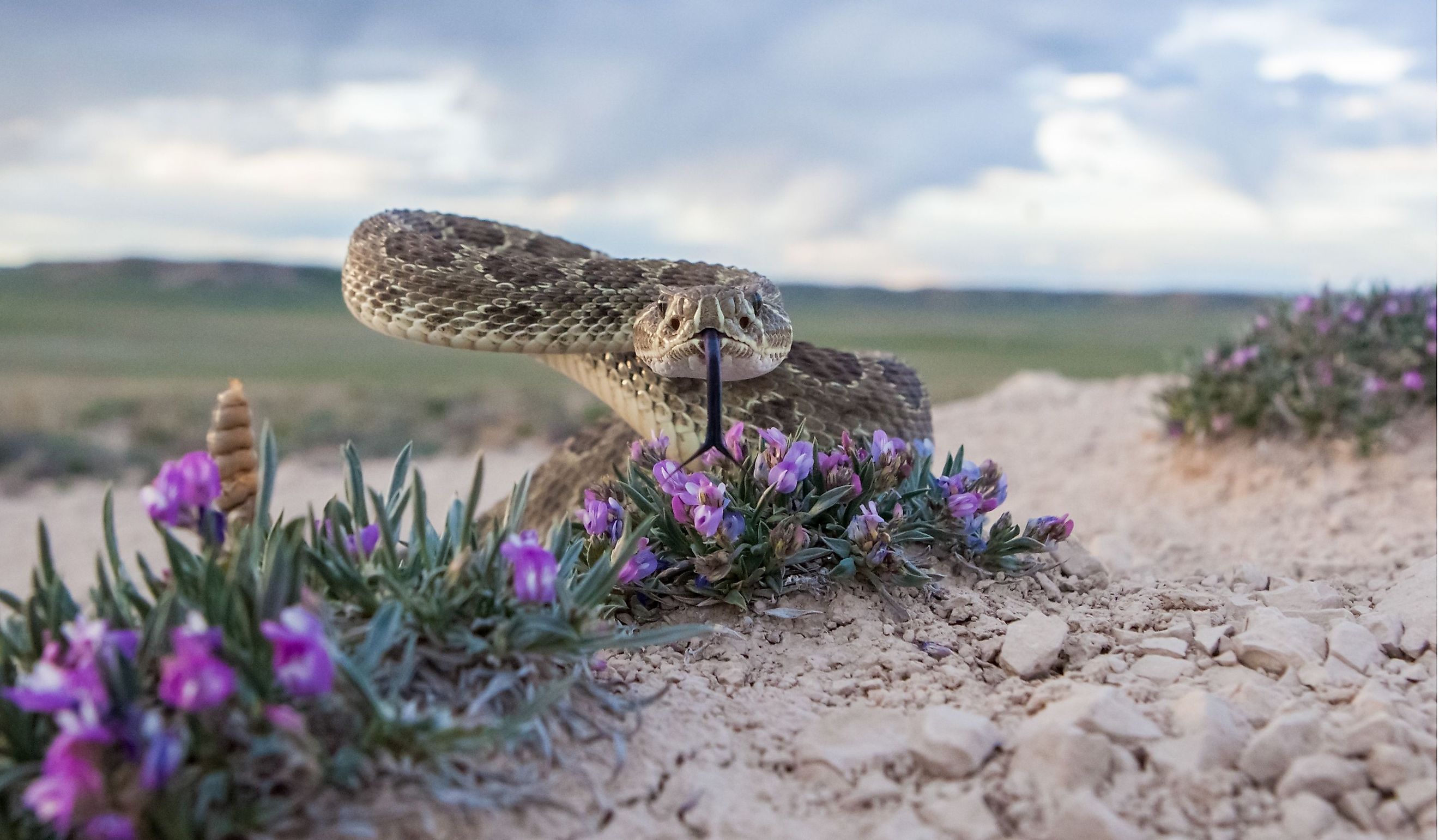
The 10 Deadliest Animals in Iowa
Iowa is famous for its great plains, where wild buffalo once roamed, and the view goes on for miles. Though its plains are vast, Iowa enjoys the diversity of wooded areas as well as riverbeds, swamps, and wetlands. With this array of habitat there comes a variety of wildlife as well and not every animal in Iowa is cute and fuzzy. Some of the wildlife in this region can be deadly.
Prairie Rattlesnake
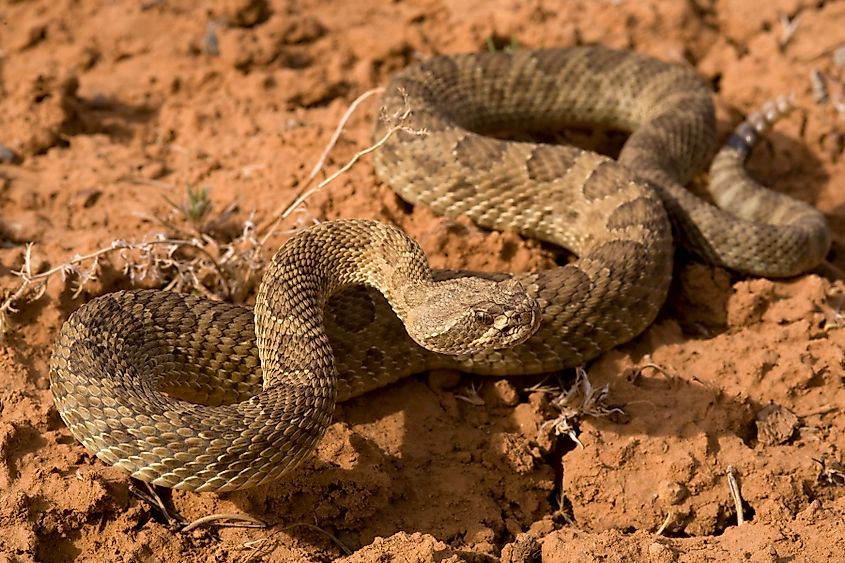
Snakes can often cause a fright, and in the State of Iowa, be on your toes because there’s a chance a Prairie Rattlesnake might slither past you while in its natural habitat, which could be anywhere from prairie lands to wooded areas. Its venomous bite is nothing to take lightly and can prove to be very dangerous to humans and deadly to small animals such as prairie dogs, mice, rabbits, and other small mammals. Their length reaches up to 3.3 meters, and their olive-brown coloring and rattling tail distinguish them from other snakes. Prairie Rattlesnakes can live up to 20 years, hibernating with other species of its kind in pits and caves. Its numbers have experienced a decline in the past but are now making a comeback as efforts to restore their natural habitat are having a positive impact on their population.
Bobcat
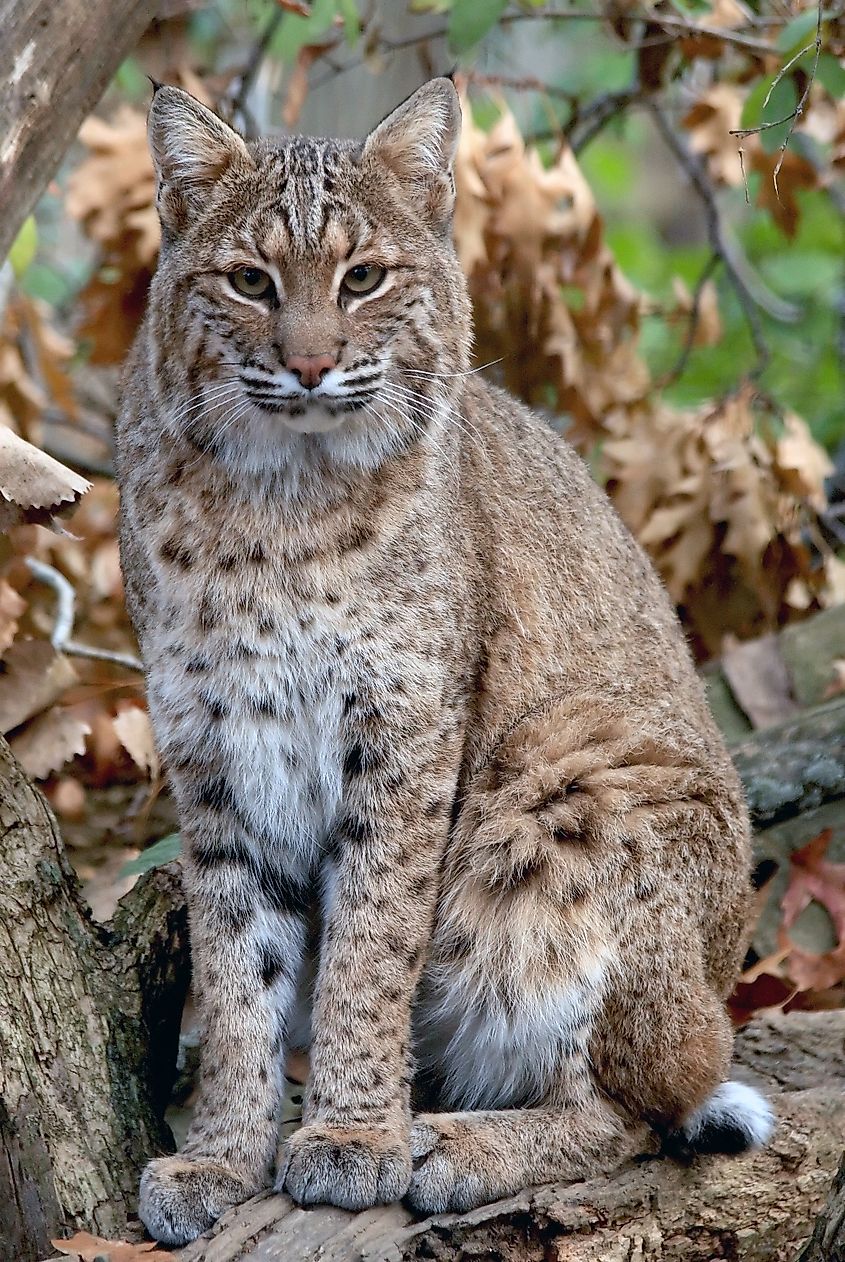
Catching a glimpse of a Bobcat in the wild is always a mysterious experience as their keen eyes and fluffy face and ears give an otherworldly appearance to this medium-sized carnivore whose length reaches 35 inches and its weight up to 25 lbs. In times past, the State of Iowa experienced a severe decline in its Bobcat numbers, but recently, they have made a comeback as a protected species, and the likelihood of seeing one in the wild is on the rise. Harmless to humans if unapproached, Bobcats are nevertheless fearless predators, stalking and ambushing their prey. Their natural habitat typically consists of open pastures, grasslands, and wooded areas. The trait that makes a Bobcat most recognizable, aside from its luxurious pale-colored fur coats and tufted ears, is their tail, which measures only five inches long.
American Bison
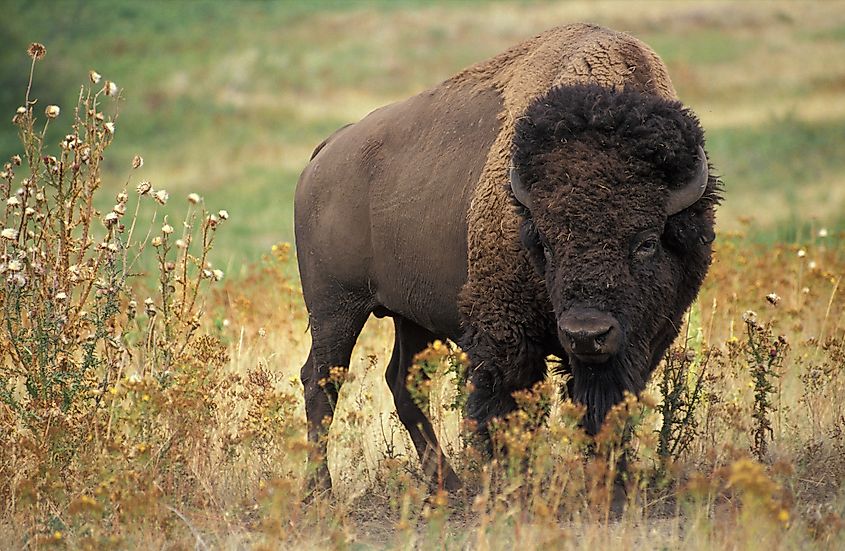
The story of the American Bison, whose habitat includes the State of Iowa, is a devastating one as statistics reflect how their numbers once reached the 75 million range. These days, unfortunately, there are less than one million remaining but hope is on the horizon. One of the improvements the American Buffalo is enjoying is the fact that they were designated as the National Animal of the United States. Needing huge landmasses as their habitat, the American Buffalo also acts like a steward to prairie lands by feeding on the grass and sedge and deterring the growth of trees, and their ecological footprint makes a big impact. The American Buffalo is a large and heavy animal, measuring upwards of 2,000 pounds at the height of their growth. They are also fast and can run at speeds as high as 35 mph. Known to be unpredictable and very aggressive, those who farm American Bison caution people to take them seriously as they can be deadly if provoked.
American Black Bear
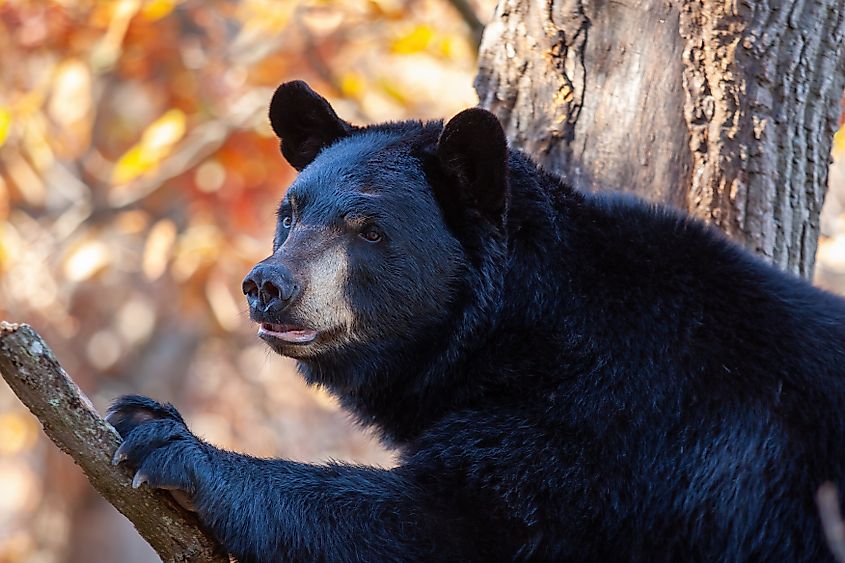
Iowa’s Black Bear is large and heavy, measuring four to seven feet in length and weighing in at around 900 lbs. As omnivores, Black Bears prove harmless when they can find their favorite foods, which consist of succulent plants, nuts, insects, and acorns primarily. However, when these food sources are not available, they will eat meat and less desirable plants. Black Bears are not deadly at all, but they were made on the list due to misconceptions about them. It is a widely held belief that Black Bears will attack a human if they come between a mother and her cubs, but this is not true. This, in fact, is a trait of the Brown Bear, otherwise known as a Grizzly Bear. There have never been any reported deaths in relation to Black Bears attacking people to protect their young. Black Bears are peaceful animals. They go into hibernation in the winter, and females often emerge with cubs in the Spring.
Red-Shouldered Hawk
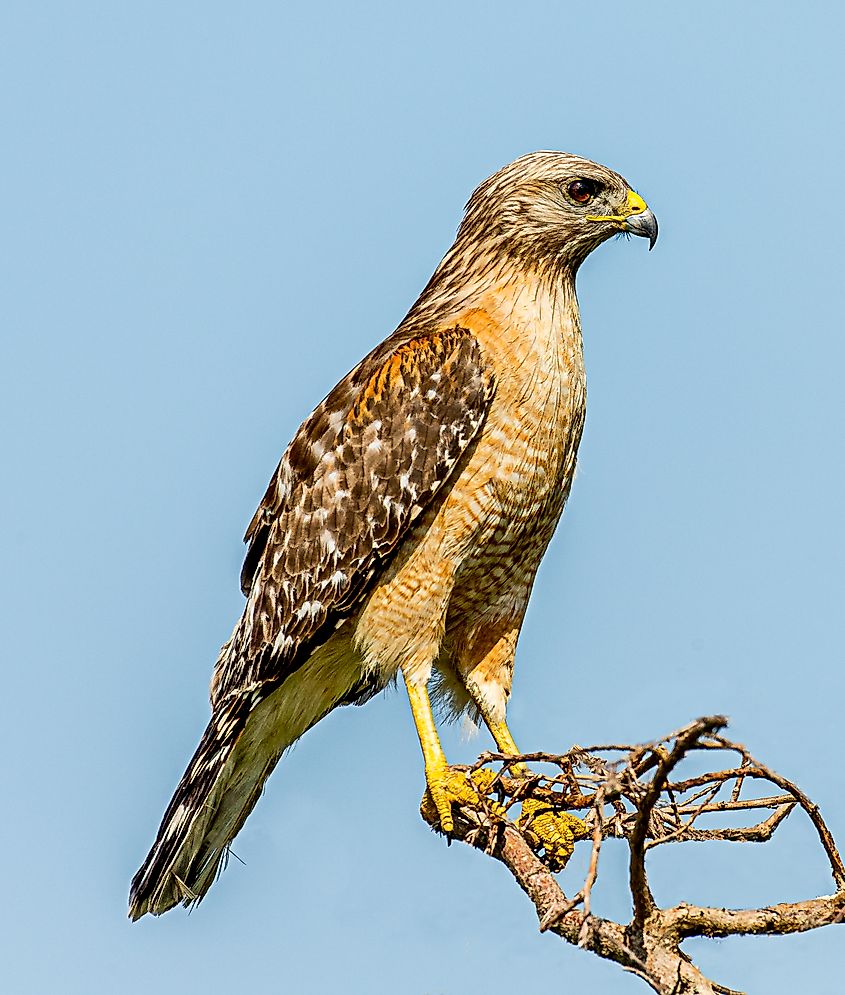
The Red-Shouldered Hawk needs approximately 250 acres of habitat to thrive, but Iowa experienced a decline in its population due to loss of habitat, typically in the understory of cottonwood and maple trees. Identifiable for their wingspan, which reaches up to one meter, as well as their rounded wing tips and square-tipped tail feathers, adults also have narrow black and white bands of color on their flight feathers and tails. Red Shouldered Hawks also have an incredibly shrill scream and prove to be deadly predators to smaller birds, chipmunks, toads, and snakes. Other natural habitats where the Red-Shouldered Hawk may be spotted are in forests and woodlands located near streams and swamps. These birds of prey feast on frogs, chipmunks, snakes, and toads, among many other things. They attack their prey from above and are remarkable hunters.
Striped Skunk
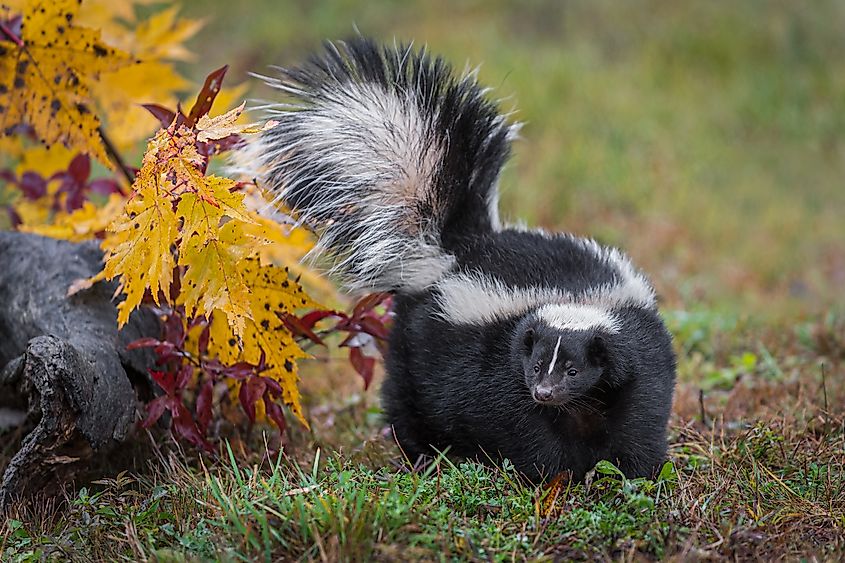
The deadliest thing about Iowa’s Striped Skunk is, of course, its unpleasant scent, which is a dead giveaway that one is in the area. Striped Skunks don’t spray due to any malicious intent, but they do so in self-defense, if necessary. Otherwise, they are harmless and easily identifiable by their black fur and white stripes going up their backs, as well as their signature waddle. If seen in the daytime, there is a possibility it is rabid because Striped Skunks are typically nocturnal animals and are not usually seen in broad daylight, so they must be approached with caution. Striped Skunks prefer a diet of bird eggs, bug larvae, berries, and grubs, and the greatest nuisance of having one around, aside from their smell, is their tendency to dig holes in lawns in search of grubs.
Indiana Bat
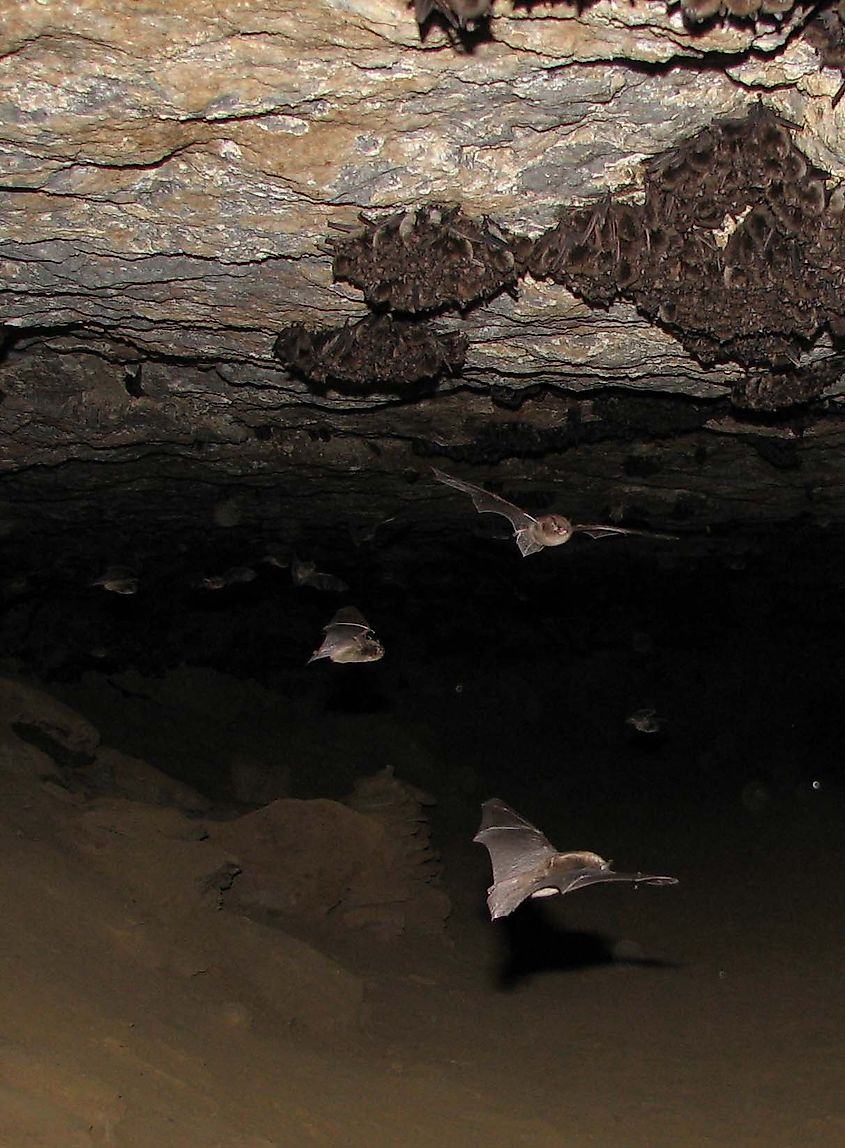
The Indiana Bat is one of nine species of bats native to Iowa. As is common for most species, they live in caves and mines in the winter months and spend the warmer months tucked in the nooks of trees, under tree bark, within stone wall crevices, or anywhere they can safely tuck themselves out of site. Their populations are in decline due to an alarming rise in cases of the fungal infection White Nose Syndrome as well as habitat loss. Indiana Bats are foragers, and their diet consists of insects such as moths and beetle larvae. Bats are marvelous hunters and zone in on their next meal by using echolocation, targeting their prey using sound vibrations. Having bats in the nearby vicinity is highly beneficial even though they are often misunderstood and feared. However, there is no need to fear bats at all, as they are excellent to have around to keep the bug population in control. Bats are especially deadly to mosquitos, their favorite snack.
Sharp Shinned Hawk
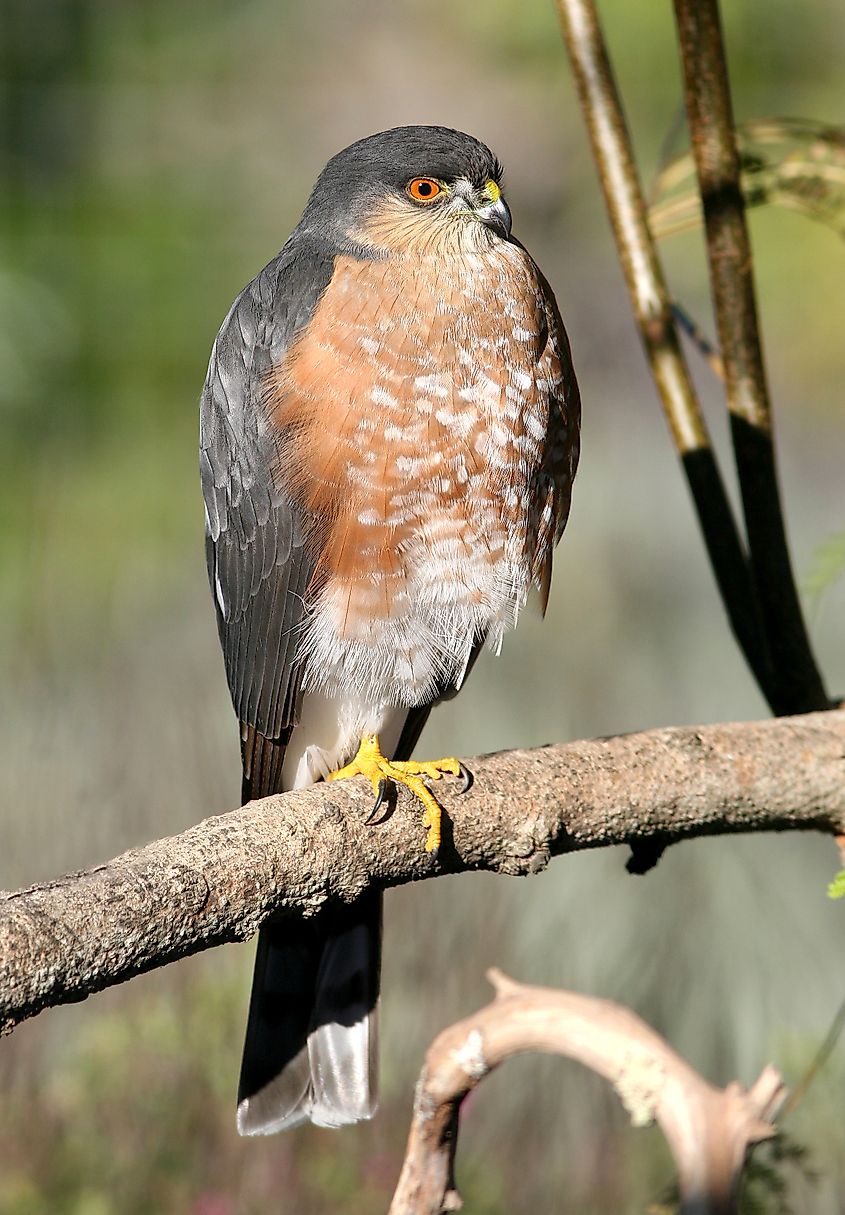
Iowa enjoys a variety of hawk species, and one of the fiercest among them is the Sharp Shinned Hawk, identifiable by its wingspan of 16.9 to 22.1 inches. They also have long legs and small heads with bluish-grey feathers. Their breast is a reddish-orange color with a barred upper side. They are at home near lakes and in forests but can also be found in wetlands and out on the prairies. The most common place to spot a Sharp Shinned Hawk, however, is along the river. Humans are of no interest to the Sharp Shinned Hawk, but they represent a deadly threat to songbirds, on the other hand, as they are one of the species' favorite foods. Sharp Shinned Hawks commonly prey on robins, woodpeckers, and sparrows. They will also eat voles, mice, and insects.
Copperhead Snake

The stunning Copperhead Snake is one of Iowa’s highly venomous snakes, and they are considered extremely dangerous, but due to their low population, killing them or collecting them is illegal. Typically remaining in the extreme southern portions of the State, they are easy to recognize even if sitings are rare. They have skin the color of copper pennies and a diamond-shaped head with a narrow neck and elliptical pupils, like cat’s eyes. Copperhead Snakes can grow up to 40 inches in length (101 centimeters) and represent a formidable opponent to any food source in their path thanks to the heat-sensing glands on their head, which help them to pinpoint the exact location of their next victim. Their habitat is near streams, wooded areas, and floodplains.
Brown Recluse Spider
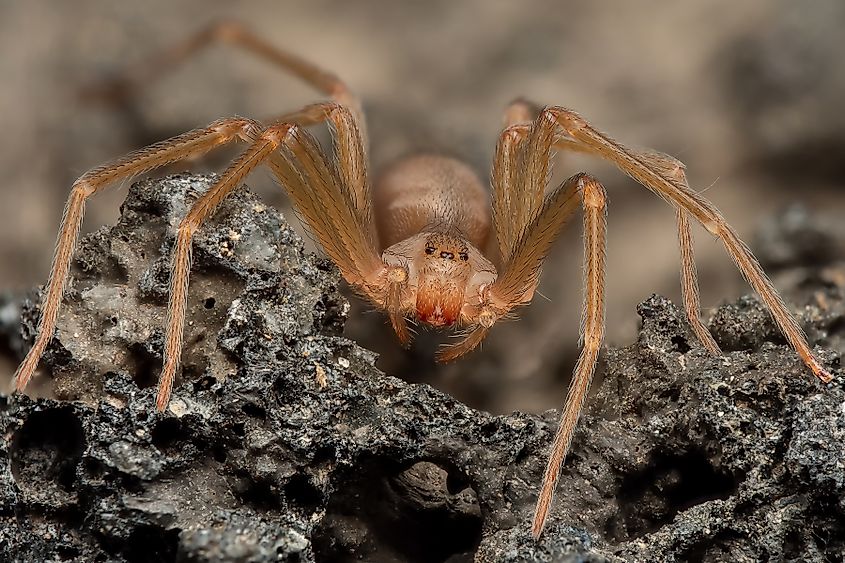
Iowa’s not a common location for the Brown Recluse Spider, but there have been encounters from time to time, and it is best to be aware of what they are all about because there is a possibility of coming into contact with one, especially in the colder months where they can only survive indoors. These critters are very reclusive, as their name implies, and would rather be left alone. They are not considered to be aggressive, but if they feel threatened, they will bite as a matter of self-defense. Their bite is small, but it creates big problems because the bite mark starts to ulcerate the skin over time and will require serious medical attention in order to heal, which is why they made the list of one of Iowa’s deadliest animals.
Iowa’s flora and fauna are varied and plentiful, with habitats being restored more and more, enhancing its wildlife population. The once free-roaming Buffalo overshadowed the plains in vast numbers and is experiencing a resurgence. Though they can be aggressive and unpredictable towards humans, they are vital to the health of the plains ecosystem. On the other hand, the otherwise genteel and adorable Striped Skunk is not so cute once its pungent odor makes its presence known. These animals represent the remarkable diversity of the wildlife population and pose a deadly threat to their prey, if not to humans.











